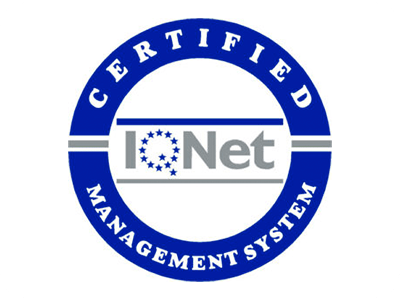The Power of Patient Voices: How Pharmacovigilance Can Benefit from Patient Engagement
May 9th 2023

Have you ever wondered about the safety and effectiveness of the medications you take? As a patient, your voice and experiences are a vital component in ensuring the quality and safety of medications.
In the world of pharmacovigilance, the importance of patient voices cannot be overstated. As the very people who take prescription drugs and experience their effects first hand, patients have a unique perspective on the safety and efficacy of these medications. By engaging with patients and listening to their feedback, pharmacovigilance professionals can gather valuable insights, leading to improved drug safety and better health outcomes for everyone.
In this post, we’re going to explore the power of patient engagement in pharmacovigilance and how it can help to create a safer and more effective healthcare system. From social media monitoring to patient surveys and focus groups, there are a variety of ways to tap into patient perspectives and leverage their insights. So, let’s dive in and discover how patient voices can drive positive change in the world of pharmacovigilance.
The importance of patient voices in pharmacovigilance
One of the key challenges in pharmacovigilance is identifying adverse events that may not have been detected during clinical trials. This is where patient engagement comes in. Patients are the end-users of these products and have a unique perspective on their safety and efficacy. Their feedback can provide valuable insights into the real-world use of these products and help identify potential safety concerns.
Patient engagement is especially important in the context of rare diseases. Patients with rare diseases often have few treatment options, and any adverse event can have a significant impact on their health and quality of life. By engaging with these patients, pharmacovigilance professionals can gain a better understanding of the risks and benefits of these treatments and make more informed decisions about their use.
However, patient engagement in pharmacovigilance isn’t always straightforward. Patients may not be aware of the importance of reporting adverse events, or they may not know how to report them. There may also be concerns about privacy and confidentiality. Despite these challenges, there are many examples of successful patient engagement in pharmacovigilance.
The benefits of patient engagement for pharmacovigilance for patients, healthcare providers, and pharmaceuticals
Patient engagement in pharmacovigilance has many benefits for patients, healthcare providers, and pharmaceuticals. For patients, it can lead to safer and more effective treatments and better health outcomes. For healthcare providers, it can lead to a better understanding of the real-world use of drugs and medical products and more informed decision-making. For pharmaceuticals, it can lead to better drug development and improved public perception of their products.
By engaging with patients and listening to their feedback, pharmacovigilance professionals can identify potential safety concerns more quickly and take action to address them. This can lead to improved drug safety and better health outcomes for everyone.
Examples of successful patient engagement in pharmacovigilance
One of the most well-known examples of patient engagement in pharmacovigilance is the yellow card scheme in the UK. This scheme allows patients and healthcare professionals to report suspected adverse drug reactions to the Medicines and Healthcare products Regulatory Agency (MHRA). The MHRA uses this information to monitor the safety of drugs and take action if necessary.
Social media monitoring is another example of successful patient engagement in pharmacovigilance. Patients often share their experiences with drugs and medical products on social media, providing valuable insights into their real-world use. By monitoring social media, pharmacovigilance professionals can identify potential safety concerns and take action to address them.
Patient surveys and focus groups are also effective ways to engage with patients and gather their feedback. These methods allow pharmacovigilance professionals to ask specific questions and gain a deeper understanding of patients’ experiences with drugs and medical products. This can lead to better patient outcomes and a safer healthcare system.
Challenges in engaging patients in pharmacovigilance
Despite the benefits of patient engagement in pharmacovigilance, there are several challenges that need to be addressed. These include:
- Awareness: Many patients are not aware of the importance of reporting adverse events or may not know how to report them. This can lead to underreporting of adverse events and a lack of data for pharmacovigilance professionals to work with.
- Privacy and confidentiality: Patients may be reluctant to report adverse events due to concerns about their personal information being shared. This is especially true for patients with rare diseases, who may be easily identifiable.
- Language and cultural barriers: Patients who do not speak the language of the healthcare provider may be unable to report adverse events or provide feedback. Cultural differences can also affect how patients perceive adverse events and whether or not they report them.
Strategies to overcome challenges in patient engagement
There are several strategies that can be used to overcome these challenges and engage patients in pharmacovigilance.
- Education: Patients need to be educated about the importance of reporting adverse events and how to do so. This can be done through patient information leaflets, online resources, and public awareness campaigns.
- Privacy protection: This can be done by using secure reporting systems and anonymizing data wherever possible. Patients should also be made aware of their rights and how their information will be used.
- Translation services and cultural sensitivity: Healthcare providers can be trained in these services to limit the impact of language barriers. This will ensure that patients are able to report adverse events and provide feedback regardless of their language or cultural background.
The role of AI in patient engagement in pharmacovigilance
By leveraging AI in patient engagement, healthcare professionals can collect and analyze patient feedback more effectively and quickly, thereby improving patient safety and enhancing the overall medication experience. AI can also facilitate the identification of patterns and trends that may not be immediately evident, enabling pharmacovigilance professionals to respond to potential safety issues in real-time.
AI tools can analyze large volumes of data from various sources, including social media, electronic health records, and online forums, to identify potential safety concerns and adverse effects of medications. Online reporting systems, mobile apps, and social media monitoring tools are all examples of technology that can be used to engage patients and gather their feedback. These tools can make it easier for patients to report adverse events and provide feedback, and can also help pharmacovigilance professionals to identify potential safety concerns more quickly.
Furthermore, AI-powered chatbots can be used to provide personalized and timely support to patients, answering their questions and concerns about medications. This approach can reduce the workload on healthcare professionals, making it easier for them to focus on more critical issues.
Best practices for patient engagement in pharmacovigilance
To ensure effective patient engagement in pharmacovigilance, there are several best practices that should be followed. These include:
- Providing clear and concise information about adverse events and how to report them
- Ensuring that patients’ privacy and confidentiality are protected
- Providing translation services and cultural sensitivity training for healthcare providers
- Using a variety of engagement methods, such as surveys, focus groups, and social media monitoring
- Providing feedback to patients so that they know their input is valued
- Collaborating with patient advocacy groups to ensure that patient voices are heard
Future of patient engagement in pharmacovigilance
The future of patient engagement in pharmacovigilance looks promising. Advances in technology, such as AI and mobile apps, are making it easier for patients to report adverse events and provide feedback. Patient advocacy groups are also becoming more active in promoting patient engagement in pharmacovigilance.
As the importance of patient engagement in pharmacovigilance becomes more widely recognized, we can expect to see more efforts to engage patients and gather their feedback. This will lead to a safer and more effective healthcare system that takes into account the unique perspectives of patients.
Ready to see what we can do for you?
In the right hands, artificial intelligence can take human performance to a hitherto unimaginable level. Are you ready for evolution?




